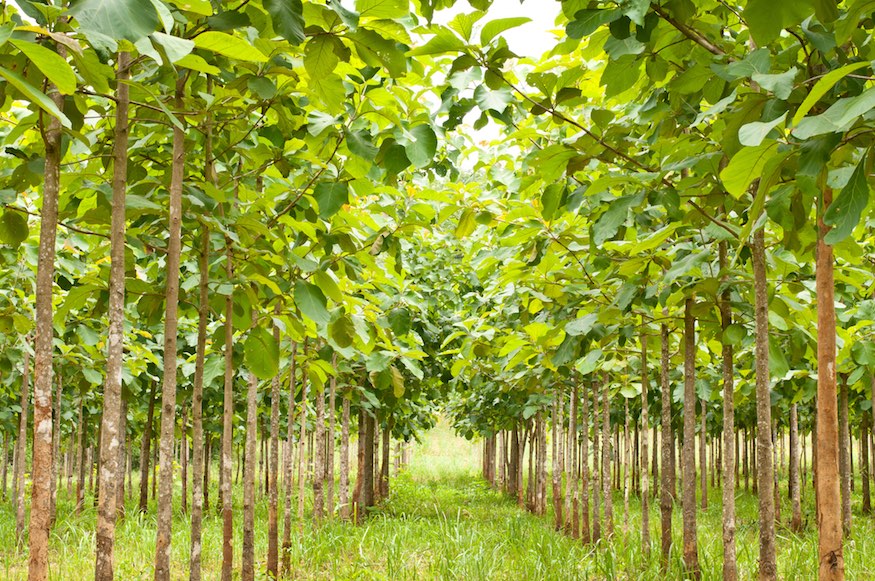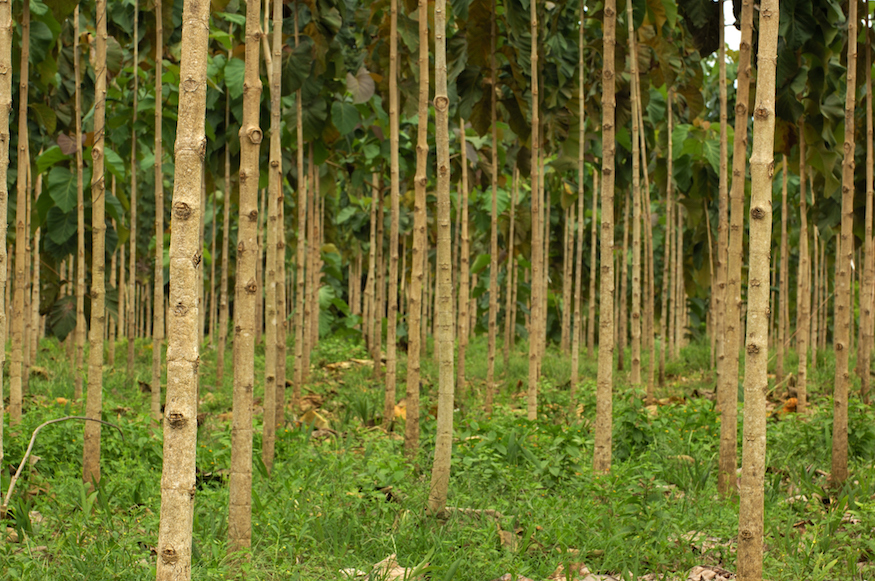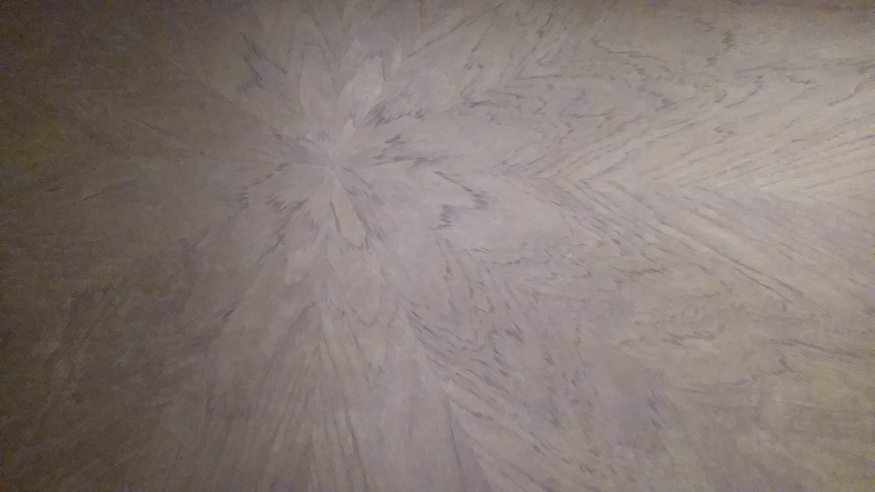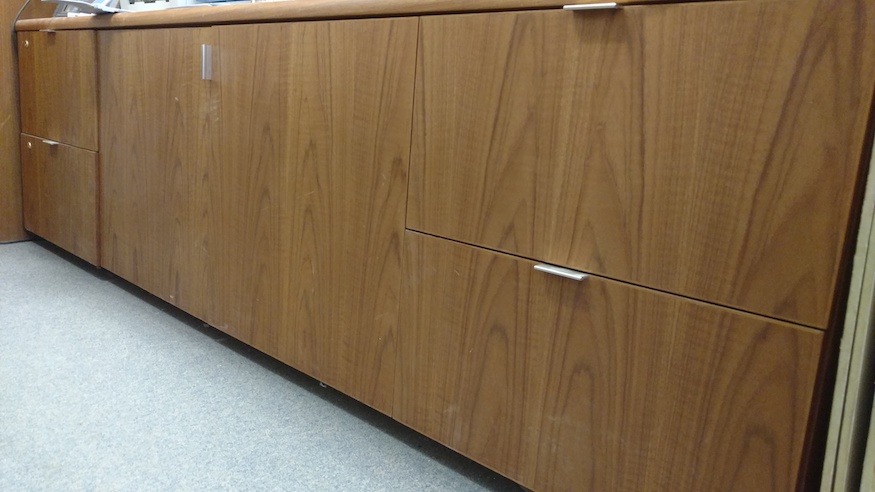What is Teak?
Teak is a tropical hardwood that has fragrant white flowers and large leaves and in genuine form is referred to as “Burmese teak”. It is native to many countries in southern Asia, from Burma to India, Indonesia, or Thailand. Teak trees easily grow up to 130 feet tall, but can take 80 years or more after seeding before it can be harvested. In the logging industry, trees are sometimes transported by floating down a river for a great distance. Teak cannot be transported this way, because it doesn’t actually float. It instead, has to be transported by elephants that skid the logs through the jungle.

Teak heartwood is a golden brown to brownish red color and darkens with age and sometimes has dark patches. The sapwood is typically whitish to pale yellow-brown in color. It separates easily from the heartwood and is much less durable. The grain is typically straight, but a wavy or interlocked grain can sometimes occur. It has a coarse, uneven texture and displays a low natural luster. Unfinished teak can be slightly oily to the touch.

Why Choose Teak?
Teak is known as the “gold standard” for decay resistance and is highly valued for its durability and water/rot resistance and elegance. When used indoors, teak will last indefinitely and will last upwards of 50 years when used outdoors. Due to its high rot and decay resistance, teak is often used in boat building and exterior construction. But there is more to it than just durability. Teak is a beautiful wood and has been used in homes of the wealthy and powerful for centuries. Today it can be used in veneers, custom furniture, carving, and turning.

All woods have natural oils that protect the tree throughout its life (maple sap or tea tree oil), however teak has the ability to maintain its natural oils after being harvested and processed and this is what makes it so resistant, durable, and valuable. Natural oils and rubber found within the wood after harvest weather and rot proof the wood and protect it from fungi and parasites.
Teak in Woodworking
Teak is easy to work in almost all regards – the only caveat being that it contains a fair amount of silica which has a dulling effect on cutting edges. Teak glues well. Finishing teak is difficult due to its extremely oily nature. Typically, teak is only finished with teak oil and it is difficult to find a woodworker that will finish it with anything else. It can be finished with other types of finish, but it must be wiped with a solvent prior to finishing. It takes glue well, but again, it is important to first wipe the wood with a solvent or the glue will not stick. Teak has a leathery smell when milled. It is very expensive- perhaps one of the most expensive large size, non-figured lumbers available.

Like Mahogany, the byname “Teak” has been affixed with many different woods seeking acclaim. Usually, a wood bearing any degree of resemblance to teak has the geographical region of its origin listed in front of its name (Brazilian Teak, for example). The name “Burmese Teak” is the only name that refers to genuine Teak.
Like the look? Contact us to get started on a custom woodworking project of your own using Lyptus.